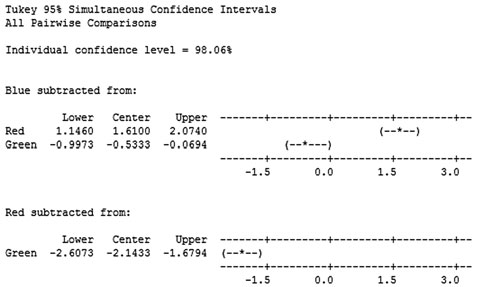Which type of light results in the tallest rosemary plants after 38 days of growth? To answer
Question:
Which type of light results in the tallest rosemary plants after 38 days of growth? To answer this question, Joliet Junior College student Michael Bueno planted 90 rosemary seeds in plant pods. He randomly assigned each seed to either a green light bulb, blue light bulb, or red light bulb. All the seeds were planted in the same type of soil, received the same amount of water and same amount of light each day, and were all located in a room maintained at 70 degrees Fahrenheit. The following data represent the heights (in inches) of the plants after 38 days.

(a) What type of experimental design did Michael perform?
(b) What is the response variable in his experiment? Is it quantitative or qualitative?
(c) What is the explanatory variable in his experiment? Is it quantitative or qualitative?
(d) What other factors did Michael identify that may affect plant growth? How did he handle these factors?
(e) What technique was used to address the fact that some seeds may grow at different rates? In other words, just as not all humans grow to the same height, all rosemary seeds will not grow to the same height (due to genetics). What did Michael do to address this concern?
(f) Michael wanted to know whether the color of the light played a role in determining plant height after 38 days. State the null and alternative hypotheses.
(g) Following are the descriptive statistics for each treatment group. Is the requirement of equal population variances satisfied? Why?

(h) Use the results of a one-way ANOVA from MINITAB given next to test the hypotheses stated in part (f).

(i) Following are side-by-side boxplots of each plant’s growth for each light color. Based on the boxplots and the results of part (h), do you believe a certain light color promotes plant growth more than the others?

(j) Following are the results of Tukey’s test. Determine which pairwise means may differ using a familywise error rate of a = 0.05.

Step by Step Answer:

Statistics Informed Decisions Using Data
ISBN: 9780321757272
4th Edition
Authors: Michael Sullivan III





